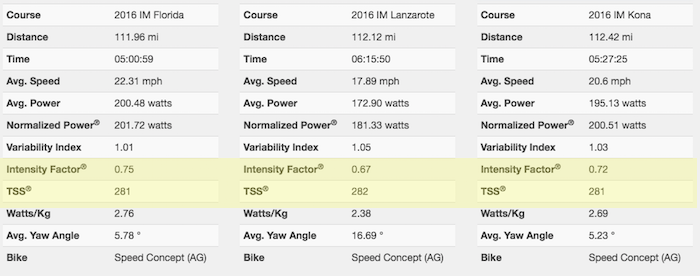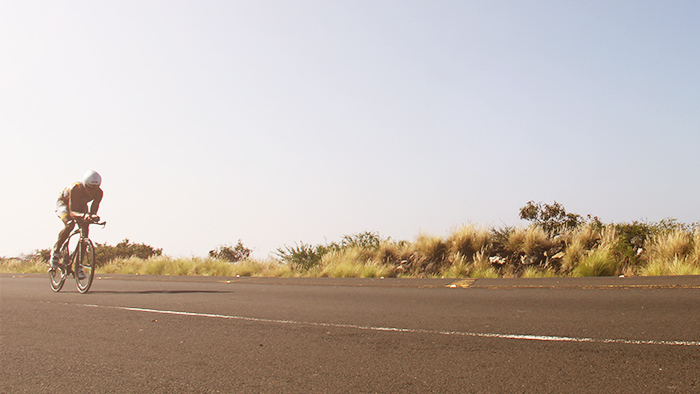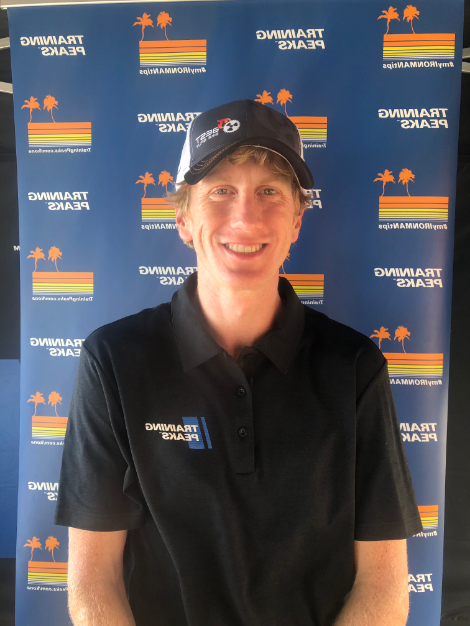Living up to its World Championship status in terms of course difficulty, Kona is definitely one of the toughest IRONMAN courses. Athletes must battle not only the distance, but also over 4,000 feet of effective elevation gain, strong (and ever changing) wind conditions and maybe most importantly heat and humidity. Reviewing age group and professionals’ power data from last year we can see a significant impact from the weather conditions. Using this knowledge we can start to adapt some athletes’ race day strategy to take these factors into account.
Adapting your Plan for the Course
Last year in Kona, Best Bike Split was available all week for athletes to stop by and review race their day plans and strategy. The biggest theme amongst age groupers and pros alike involved what Intensity Factor (IF) percentage to target. As a quick refresher, IF or Intensity Factor refers to the percentage of Functional Threshold Power (FTP) that an athlete maintains throughout a race or workout. For IRONMAN it is typical to maintain an IF somewhere between 70 to 80 percent. Professionals will tend to be on the higher end and some will go as high as 85%, due to the speeds they can maintain. What is interesting is despite the IF, most IRONMAN athletes will fall into a very similar Training Stress Score® (TSS®) range. More information on this can be found in Joe Friel’s great post from 2012. While professionals will race at a higher percentage of FTP they are on the bike for a shorter duration, so the the TSS numbers which represent Intensity and Duration will tend to fall out into a typical standard range across all IRONMAN athletes.
Getting back to targeted IF goals, the athletes we talked to pre race almost all had a specific targeted IF in mind from a previous race (often their Kona qualifying race). One issue with this strategy is that a straight targeted IF does not take the difficulty of the course into consideration. We have discussed in previous posts how obviously no two races are the same, and tackling a race like IRONMAN Florida would be quite a bit different than a race like IRONMAN Wisconsin or to an extreme race like IRONMAN Lanzarote.
So to help adjust for general course difficulty (i.e the elevation gain and the wind conditions) a targeted TSS becomes a much more effective way to plan strategy. Targeting a specific TSS where you have performed well in the past, meaning you have run well off the bike, is not an easy task to do by hand but with modeling software like Best Bike Split it is very straightforward to run scenarios and narrow down an optimal IF for the race. The image below shows the same TSS target for three different IRONMAN courses so you can see how the general difficulty of the course can impact the IF target.

The Physiological Impact
Notice that I have been using the phrase “general course difficulty”, which includes effective elevation change, wind conditions, air density and pretty much anything that impacts the physics of moving the bicycle through the course. What this doesn’t capture are the physiological impact that environmental conditions can have on the athlete. After the race last year we talked to dozens of age groupers and professionals about how their day went and almost everyone said that they suffered on the bike. Looking at the data from athletes confirmed that many started the day at their target power and continued to fade throughout the race. So why were so many athletes unable to maintain the same power levels they held in their qualifying races?
Altitude
The effects of altitude on performance are well studied and there are published approximate power adjustments that can be incorporated into a race plan. We recently worked with Dirk Friel and his athlete Chris Butler to plan a strategy for his winning performance in the Mt Evans HIll Climb race. We essentially adjusted the stress calculation so as the course rose in altitude, Butler’s FTP was adjusted down to compensate. What it means is that at higher elevations from your typical training altitude your body will start to stress at lower power levels. This plan adjustment obviously worked very well for Chris and we are starting to build this functionality deeper into our Best Bike Split models. At Kona though, altitude is obviously not a major issue but there is another factor always present that impact athlete’s stress accumulation rate, heat and humidity!
Heat and Humidity
The heat and humidity in Kona coupled with the blistering intensity of the sun can zap the energy of even the most acclimated athletes. We studied data from several pro and age group athletes after the race and compared their power output, TSS and IF levels to what they had done at previous qualifying races. In almost every case power averages were down 10 percent or more. Athletes like Jan Frodeno and Joe Skipper averaged around 270 watts, which while extremely high is 25 to 30 watts off their typical performances. What was more interesting for the pros was that in most cases TSS was lower, which would typically indicate that the athlete would be fresher for the run, but in Kona this was not necessarily the case.
Looking at the data it’s also interesting to see how the athletes paced the bike. Frodeno kept a steady output with a very low Variability Index ® (VI®) where as Skipper and Lionel Sanders went out targeting their typical power only to see steady declines throughout the race, which with the wind conditions only amplifies the time impact. What age groupers and even pros sometimes don’t understand is that the conditions present in Kona can impact your FTP so a lower TSS score is not necessarily a complete reflection of the actual stress on an athlete who is not completely acclimatised.
How to Plan For the Conditions
Whether you are contemplating races at altitude or races with temperature and humidity that differ from your typical training there are several things you can do to help prepare. Obviously if it is possible to spend a significant amount of time in the location to acclimatise that would be the ultimate way fully prepare. However, talking with coaches Dean Golich form CTS, Ben Day from DayByDay coaching, and WKO4 Product Manager Tim Cusick, every athlete they coach reacts differently to environmental conditions and adapts at different rates.
Personally, through analysis with WKO4, I know that it takes me about a month and a half once the Texas summer is in full swing to increase my FTP back to it’s early spring level. Though I find as the temperatures start to drop in the fall there was significant added fitness and my mFTP rises rapidly. For coaches really knowing their athletes abilities and what environmental factors have a significant impact on performance helps shape an achievable race day power strategy.
For the 95 percent of us that don’t have the luxury of spending a significant amount of time at the race site prior to the big day, having a secondary governor on race day can keep you from overcooking the bike and suffering later in the race. Best Bike Split has built in power and target TSS adjustments for altitude changes, but for heat and humidity the studies are a bit less concrete.
While power measures the direct effort that is going into the bike, heart rate is a lagging response of an athlete’s effort. That being said it can be used to provide a top end cap to your effort. If your heart rate is above its normal level for your target power and your perceived rate of exertion is high you may need to adjust your power targets lower to avoid paying the price in the run.
The environmental factors of your race should not be overlooked. Whether it is altitude, heat, or humidity, knowing how the conditions will affect your ability to put out power must be taken into account when you create your race plan. When you know how your body responds to the conditions you will likely encounter on race day you can make sure your race plan is as detailed as possible so you can reach your goals.
Read more about how the pros prepare for Kona, get predictions for the race, and check out live interviews from the Big Island.



